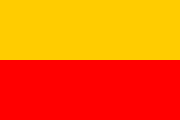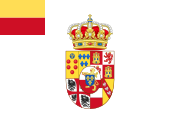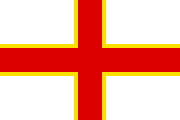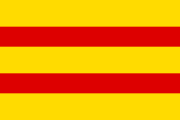Duchy of Lucca
Duchy of Lucca Ducato di Lucca (Italian) | |||||||||
|---|---|---|---|---|---|---|---|---|---|
| 1815–1847 | |||||||||
 The Duchy of Lucca (green). | |||||||||
![Imaginative map of Northern Italy in 1828.[1]](http://upload.wikimedia.org/wikipedia/commons/thumb/c/c3/North_Italy%2C_1828_%28Hall%29.jpg/375px-North_Italy%2C_1828_%28Hall%29.jpg) Imaginative map of Northern Italy in 1828.[1] | |||||||||
| Capital | Lucca | ||||||||
| Common languages | Italian | ||||||||
| Government | Constitutional Monarchy | ||||||||
| Duke | |||||||||
• 1815–1824 | Maria Luisa | ||||||||
• 1824–1847 | Charles I | ||||||||
| History | |||||||||
| 9 June 1815 | |||||||||
• Reversion to the Grand Duchy of Tuscany | 17 December 1847 | ||||||||
| Currency | Luccan lira | ||||||||
| |||||||||
| Today part of | Italy | ||||||||
The Duchy of Lucca (Italian: Ducato di Lucca) was a small Italian state existing from 1815 to 1847. It was centered on the city of Lucca.
History
[edit]The Duchy was formed in 1815 by the Congress of Vienna,[2] out of the former Republic of Lucca and the Principality of Lucca and Piombino, which had been ruled by Elisa Bonaparte.[3] It was created to compensate the House of Bourbon-Parma for the loss of the Duchy of Parma and Piacenza, which was bestowed on the former Empress of the French, Marie Louise of Austria. According to the final act of the Congress of Vienna the Duchy was to revert to Tuscany on the end of its Bourbon-Parma line of rulers or when the line would obtain another territory;[4] no stipulation was provided regarding the final fate of the Duchy of Parma upon the death of its new ruler.
The Infanta Maria Luisa of Spain, erstwhile Queen Consort (then Regent) of Etruria, widowed daughter-in-law of the last Duke of Parma, Ferdinand I, and thus a sort of matriarch of the House of Bourbon-Parma, drastically rejected the stipulations of the Congress and induced her brother King Ferdinand VII of Spain to refuse them as well. She retreated into her family's Roman residence and would not take possession of her new duchy by any means.
In 1817 the great powers finally found an accommodation: Ferdinand VII agreed to sign the Final Act and a new accessory treaty was stipulated by which the Infanta, her son Charles Louis and his male descendants were recognized as having the right of reversion over the Duchy of Parma on Marie Louise's death; whereupon the reversion of the Duchy of Lucca to Tuscany was also to take place. For its part, Austria undertook to pay, starting from June 1815, the huge compensatory annuity of 500,000 francs already provided for by the Final Act.[4]
This time the Infanta accepted and, on 22 November 1817, the Spanish ambassador to the Kingdom of Sardinia, Eusebio Bardají Azara, took possession of the duchy in her name, and she made her triumphal entry into Lucca with her son on 7 December following.[5]
When she died in 1824, Charles Louis[3] assumed the government of the Duchy under the name of Charles I.
In October 1847, not feeling up to facing the turmoil that was a prelude to the revolutions of 1848, Charles concluded a treaty with the Grand Duke of Tuscany, Leopold II, with which he renounced the dukedom in advance, thus leading to its reversion before becoming Duke of Parma;[6] which however happened within two months due to the sudden death of Marie Louise of Austria.[7]
In taking possession of his new state, on 11 October 1847 Leopold II promulgated an unexpected law which abolished the death penalty there,[8] thus making the former Duchy of Lucca the only European territory in which this measure was then legally in force. However, this situation did not last long as, with a ruling in February 1848, the Court of Cassation of Florence promptly extended the effectiveness of the measure to the entire grand ducal territory.[9] Three years earlier, in 1845, Charles I had denied pardon to five thieves sentenced to death, having them executed in one fell swoop on the lawn in front of the gate of Lucca called Porta San Donato.[10][11]
From 1815 to 1818, the flag of Lucca was yellow and red horizontal stripes.[12] From 7 November 1818, to 1847 the flag was white, with Maria Luisa's coat of arms and the yellow–red flag in the canton.[12]
Dukes of Lucca (1815–1847)
[edit]| Name | Lifespan | Reign start | Reign end | Notes | Family | Image |
|---|---|---|---|---|---|---|
| Maria Luisa | 6 July 1782 – 13 March 1824 (aged 41) | 9 June 1815 | 13 March 1824 | Only accepted the investiture in 1817; granted the rank and privileges of a queen | Bourbon-Spain |  |
| Charles Louis | 22 December 1799 – 16 April 1883 (aged 83) | 13 March 1824 | 5 October 1847[13] (Abdication) | Son of Maria Luisa | Bourbon-Parma | 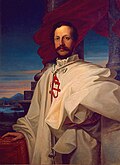 |
Symbols
[edit]-
Duchy of Lucca (1815-1818)
-
Duchy of Lucca (1818-1824)
-
Duchy of Lucca (1824–1847)
-
Merchant Flag (1819)
-
Merchant Flag (1820)
-
Coat of Arms (1815-1824)
-
Middle Coat of Arms (1824-1847)
References
[edit]- ^ The map absolutely lacks precision regarding the Duchy of Lucca and its external exclaves, as well as regarding the neighboring Grand Duchy of Tuscany and the duchies of Parma, Massa and Carrara and their exclaves in the Garfagnana, the Lunigiana and on the nearby Tyrrhenian coast.
- ^ "Lucca History". www.alucca.com. Retrieved 8 September 2012.
- ^ a b "Lucca". www.agriturismopelagaccio.com. Archived from the original on 18 August 2013. Retrieved 8 September 2012.
- ^ a b Acte final du Congrès de Vienne (art. 101–102)
- ^ Quilici, Federica (1999). Maria Luisa di Borbone. Gli affari ecclesiastici nel Ducato di Lucca : 1818-1824 (in Italian). Lucca: Accademia Lucchese. p. 35.
- ^ De Feo, p. 187 ff.
- ^ Giovannini, p. 243.
- ^ Mancini, Pasquale Stanislao (1872). "Contro la pretesa necessità della conservazione della pena di morte in Italia". Primo Congresso Giuridico Italiano in Roma. Relazione sulla Tesi I.ª Abolizione della pena di morte e proposta di una scala penale (in Italian). Roma: Pallotta. p. 61.
- ^ "PENA DI MORTE – Abolizione. FURTI VIOLENTI – Pena". Annali di Giurisprudenza (in Italian). Anno X. Firenze: Niccolai: 148 ss. 1848. Retrieved 2 December 2022.
- ^ Sardi, Cesare (1972) [1911]. Esecuzioni capitali a Lucca nel secolo XIX. Studio di documenti e ricordi. Introduction by Mario Seghieri. Anastatic reprint of the 1911 Giusti edition. Lucca: Maria Pacini Fazzi. p. 47 ff. Not a single time, during his government, had Charles I pardoned a death sentence, despite having often granted amnesties and sentence reductions. It is possible that Leopold II simply intended to highlight the difference between the new grand ducal government, characterized by traditional aversion to the death penalty, and that of the Bourbons.
- ^ Brogi, Marina. "La giustizia punitiva dà spettacolo: cinque teste di ladroni sul palco dell'ultima ghigliottina" (PDF). Provincia di Lucca. Retrieved 26 September 2023.
- ^ a b "Lucca, Duchy of (1815-1847) (Italy)". www.crwflags.com. Retrieved 8 September 2012.
- ^ De Feo, p. 187.
Further reading
[edit]- Case, Lynn M., ed. "The diplomatic relations between France, the grand duchy of Tuscany and the grand duchy of Lucca, 2nd series, 1830-1848, vol 1, August 18, 1830 To December 28, 1843, Vol 2, January 9, 1844 To February 29, 1848-Italian-Saitta, A." (1961): 455-456.
- De Feo, Francesco (1966). "La reversione del Ducato di Lucca del 1847". Archivio Storico Italiano (in Italian). 124 (450): 160–207. JSTOR 26255565.
- DiQuinzio, Mary Elizabeth. Opera in the Duchy of Lucca, 1817-1847. PhD Diss. Music) (Catholic University of America, 1997)
- Giovannini, Francesco (2003). Storia dello Stato di Lucca (in Italian). Lucca: Maria Pacini Fazzi. ISBN 9788872465882.
- Murray, John. A Handbook for Travellers in Central Italy: Including Lucca, Tuscany, Florence, the Marches, Umbria, Part of the Patrimony of St. Peter, and the Island of Sardinia. J. Murray, 1861.
- Ross, Janet, and Nelly Erichsen. The story of Lucca. (1912) online.
- Duchy of Lucca
- History of Tuscany
- 19th century in Italy
- House of Bourbon-Parma
- House of Bourbon
- House of Habsburg-Lorraine
- States and territories established in 1815
- 1815 establishments in Italy
- States and territories disestablished in 1847
- 1847 disestablishments in Italy
- Grand Duchy of Tuscany
- Former monarchies of Europe
- Former duchies


